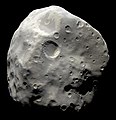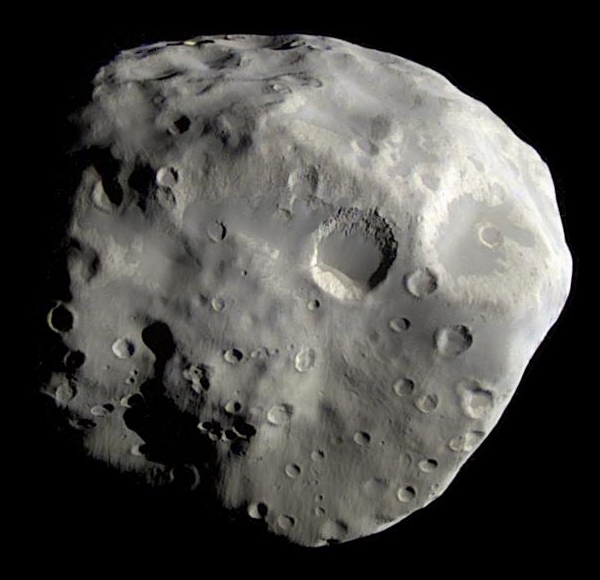ფაილი:PIA09813 Epimetheus S. polar region.jpg
PIA09813_Epimetheus_S._polar_region.jpg ((600 × 580 პიქსელი, ფაილის ზომა: 153 კბ, MIME ტიპი: image/jpeg))
ფაილის ისტორია
დააწკაპუნეთ თარიღზე/დროზე ფაილის დასათვალიერებლად, როგორც ის მაშინ გამოიყურებოდა.
| თარიღი/დრო | მინიატიურა | ზომები | მომხმარებელი | შენიშვნა | |
|---|---|---|---|---|---|
| მიმდინარე | 22:49, 5 იანვარი 2013 |  | 600×580 (153 კბ) | Antonsusi | Turn back ok, but the margin makes only a smaller, not optimised visible size of the object on pages. |
| 07:59, 19 დეკემბერი 2012 |  | 680×640 (222 კბ) | WolfmanSF | Reverted to version as of 17:18, 11 January 2008 - Solar System objects are normally portrayed with north up, which means solar illumination comes from the side; also, there's no artistic advantage to eliminating the margin | |
| 02:39, 9 იანვარი 2011 |  | 580×600 (146 კბ) | Antonsusi | cropped, turned upright | |
| 17:18, 11 იანვარი 2008 |  | 680×640 (222 კბ) | WolfmanSF | replace with processed NASA image |
ბმულები
ამ ფაილზე ბმული მოცემულია შემდეგ გვერდებზე:
ფაილის გლობალური გამოყენება
ეს ფაილი გამოიყენება შემდეგ ვიკებში:
- გამოყენება af.wikipedia.org-ში
- გამოყენება als.wikipedia.org-ში
- გამოყენება ar.wikipedia.org-ში
- გამოყენება ary.wikipedia.org-ში
- გამოყენება arz.wikipedia.org-ში
- გამოყენება ast.wikipedia.org-ში
- გამოყენება as.wikipedia.org-ში
- გამოყენება be.wikipedia.org-ში
- გამოყენება bh.wikipedia.org-ში
- გამოყენება bs.wikipedia.org-ში
- გამოყენება ca.wikipedia.org-ში
- გამოყენება ckb.wikipedia.org-ში
- გამოყენება de.wikipedia.org-ში
- გამოყენება el.wikipedia.org-ში
- გამოყენება en.wikipedia.org-ში
- Cassini–Huygens
- Epimetheus (moon)
- Wikipedia:Selected anniversaries/December 18
- Timeline of discovery of Solar System planets and their moons
- Moons of Saturn
- List of Solar System objects by size
- Naming of moons
- List of natural satellites
- User:Dabomb87/Sandbox
- Talk:Solar System/Archive 7
- Wikipedia:Main Page history/2012 December 18
იხილეთ, ამ ფაილის გლობალური გამოყენება.




